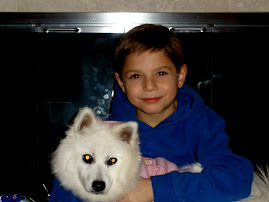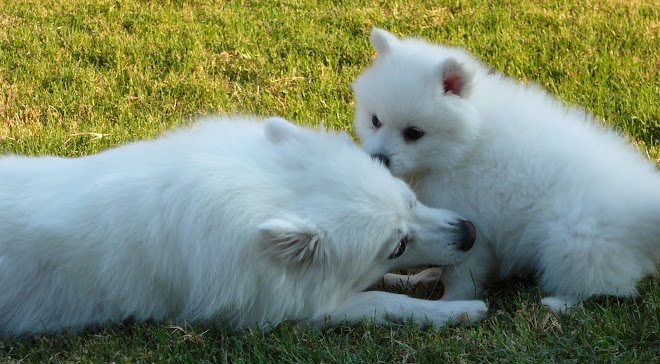+-+9+wks+old.jpg) September 16, 2009
September 16, 2009 As we savor the last days of summer, we also plan for fall's changes. We take the kids shopping for back-to-school clothes and supplies. We mentaly prepare ourselves for getting back to the grind at work. But we also need to prepare our dogs.
Because come Autumn, your dog's life often changes, too. The kids go back to school and aren't around for extended playtime. Young adults leave for college and can't interact with her at all. Older adults may be preoccupied with missing the kids or getting back to work themselves. The result can be a lonely dog who barks, forgets her housetraining, becomes destructive, or simply acts depressed.
A little planning beforehand can forestall such trauma. Here's how:
- Change caregivers. If your dog's main caregiver is a family member who soon won't be around to do that, start making the switch to an adult or sibling who will remain behind. Begin by having the primary caregiver take your dog for two walks a day, with teh new caregiver doing the rest. By the time the primary caregiver departs, the new caregiver should already have taken over.
- Maintain routines. Although your dog's caregiver may change, her routine shouldn't. She should eat, walk, and play at the same times with her new caregiver.
- Keep active. Trainers often say that a tired dog is a good dog - for good reason. A dog who has gotten some vigorous exercise is too pooped to get into trouble. Give your dog at least 20 minutes of aerobic activity daily, but don't do such activity in the middle of a hot day.
- Monitor carefully. If your dog quits eating or acts lethargic as you make these adjustments, don't assume she's unhappy with what's going on. She could be physically ill. Take her to the veterinarian if such behavior continues for more than a day or two.
*Courtesy of DogFancy (Oct.2009 issue) / Written by Susan McCullough












